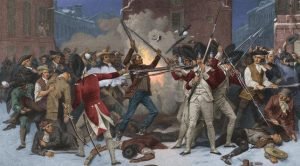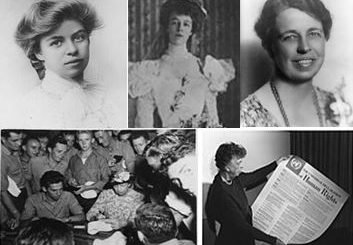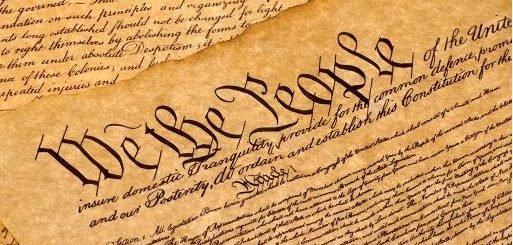The Boston Massacre
The Boston massacre, as it came to be called, was a deadly confrontation that broke out between British soldiers and a mob of colonists. It was referred to by the British as the Incident on King Street. This riot took place on the 5th of March, 1770. It started as a brawl between a soldier and an American colonist. The misunderstanding soon escalated into a deadly clash that took the lives of 5 people.
Before the Massacre
Since 1765, the people of Boston had had issues with the Stamp Act and then the Townshend Act. In October 1768, Governor Bernard requested for soldiers to protect officials of the government from attacks. The soldiers kept the peace and ensured that the taxes imposed were paid. By the early 1770s, Bostonians began fuming over what they felt was unjust British tax laws which covered paint, tea, paper, glass, and lead. The British soldiers and officials had their hands full when they tried to suppress American colonists from rebelling.
The colonies refused to pay the taxes because they believed it violated their rights and they also believed the British did not have the right to tax them. According to them, only the Massachusetts Assembly had the right to tax them. If the British Parliament wanted them to pay taxes then they in turn had every right to present in the British parliament.
On February 22nd, a few patriots were said to have attacked the store of a loyalist. A customs officer, by name Ebenezer Richardson, was said to have seen what was happening and in trying to disrupt the attack, fired a gun from the window of his home. Unfortunately, an 11-year-old boy, Christopher Seider, was struck to death by his gunfire. The boy’s death infuriated the the Patriots. The Patriots were colonists of the thirteen American colonies who were not in support of British rule.
However, there is another version of the incident which states that Ebenezer Richardson was not at home but was being chased by the mob when he fired his gun and hit Christopher Seider in the abdomen.
Altercations between British soldiers and American colonists became a common issue. As tempers flared, they set the stage for the Boston massacre. Initially, the name was made popular by the engraver, Paul Revere. As we will see shortly, Revere’s depictions of the clash played a crucial role in building up anti-British sentiments not only in Boston, Massachusetts, but across the other American colonies.
The Day of the Massacre

The Boston Massacre took place right in front of the Old State House.
On the fateful day of the massacre, a British soldier, Hug White, was guarding the King George III‘s money (i.e. taxes) in the Custom-house of King Street when infuriated colonists arrived and started threatening and hurling insults at him. When Private Hugh could not take it anymore or find a better way to handle it, he hit a colonist with his bayonet which aggravated the situation. Colonists, in turn, threw snowballs, ice, and stones at him till he could not bear the situation anymore. He called for backup and eight soldiers came to support him against the colonists. No one really knows who gave the order or if there truly was an order but the soldiers started to fire into the crowd claiming they heard the order to fire.
Three people (Samuel Gray a toolmaker, Crispus Attucks a black sailor, and James Caldwell a mariner) were killed instantly while some others sustained injuries. Among those injured were Samuel Maverick and Patrick Carr. Those two would later succumb to the gunshot wounds and die. Their deaths raised the death toll to five people. The first four were buried on the 8th of March while Patrick Carr. who died on the 14th of March, was buried on the 17th of March.
The Aftermath of the Massacre
After the massacre, the acting governor of Boston at the time, Thomas Hutchinson, dispersed the crowd. A meeting was called for the removal of the British soldiers from Boston. The town leaders also wanted the soldiers and their captain tried for the murder of the five people in the massacre.

The Boston Massacre resulted in 5 deaths and some other injuries.
Thirteen people were arrested including four civilians. Captain Preston and the eight soldiers who played part in the massacre were put in jail. They were arraigned in court for the murder of the five people during the massacre. Their trials began on the 27th of November, 1770. John Adams, a founding father who went on to become the second president of America, took it upon himself to represent the accused soldiers. Adams maintained that the defendants had the right to legal counsel and a fair trial.
At the end of the trial, the court acquitted seven of the defendants on claims of self-defense. The remaining two defendants were not so lucky. The court convicted them of manslaughter. They, however, claimed benefit of clergy which allowed them penance instead of being put to death for murder. Afterward, they were both branded on their thumbs to stop them from using the benefit of clergy in the future.
The Boston massacre, one way or the other, led to the American revolution and eventually to American Independence. Weeks after the incident, patriots, and loyalists released pamphlets which told different versions of the event. Henry Pelham, an engraver put the incident in an engraving, while Paul Revere, another engraver, closely copied the image.
The massacre had a great impact on the relationship between American colonists and the British. It was difficult for them to get along. After the incident, the Tea Act of 1773 was passed by the British Parliament. The exclusive right to sell tea was now given to the East India Company. The Tea Act cut out the middlemen and made tea a lot cheaper than it was. However, the American colonies were not in agreement with the new act as this legitimized Great Britain’s right to pass laws and tax them.
An irate mob, some from Boston’s Sons of Liberty, took to the streets to protest what they deemed as very crippling and oppressive taxes. Over 500 people joined the protest. Protesters dressed up in Native American costumes and went onto the ships loaded with tea at the Boston Harbor. They destroyed roughly 46 tons of tea worth an estimated 10,000 Pounds Sterling back then. This incident is what came to be known as the Boston Tea Party.
Following the Boston Tea Party, the 13 American colonies went on to form the first Continental Congress and subsequently engaged in the American War of Independence (1775-1783).



























